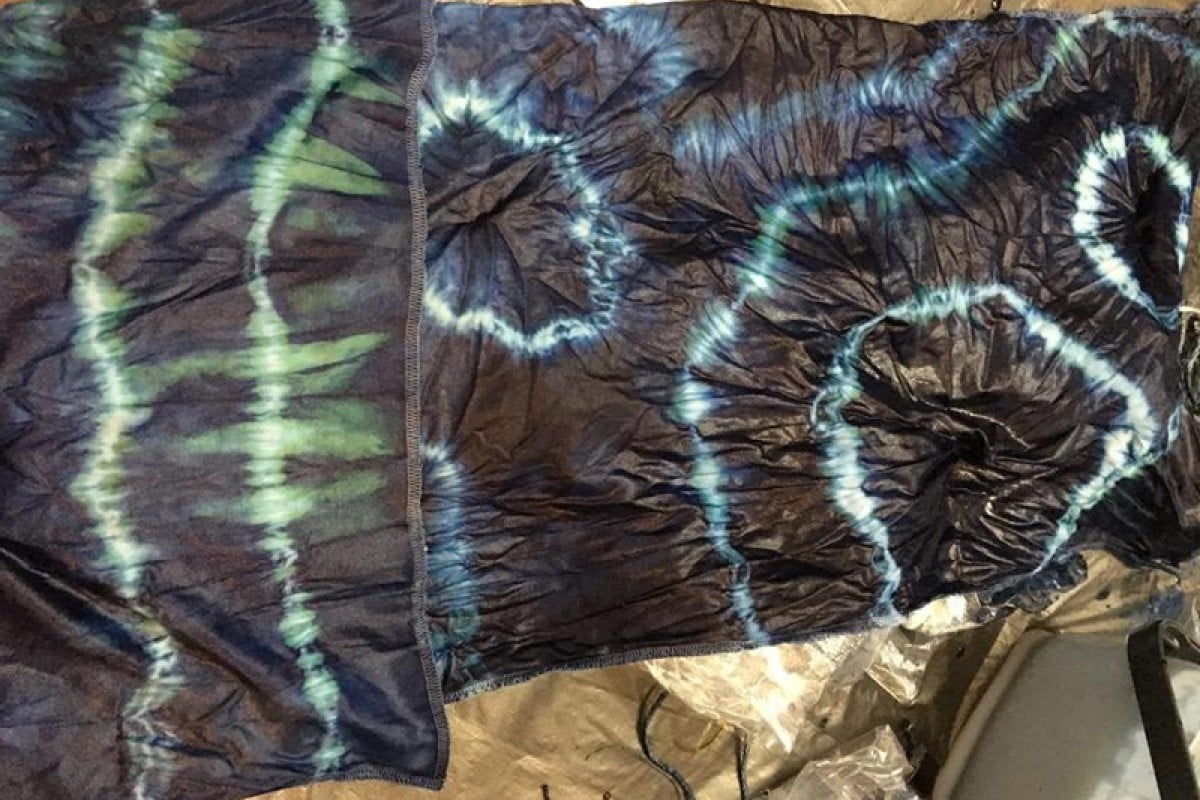
Creating your very own completely unique indigo-rgeous tie-dye scarf
 Beautiful and unique!
Beautiful and unique!We have a lot of fashion options in Hong Kong. But for all the latest trend and styles, clothing manufacturers still use some pretty old techniques. One of those is the craft of fabric dyeing – especially using indigo.
I went to the “Saving the Past for the Future” event held by City University’s Cultural Management team to learn more about this ancient art form.
In the “22 Shades of Blue” programme, led by instructor Chang Tak-yee, I found out more about dyeing with indigo, the vivid blue pigment that has been valued for millennia.
What is indigo?
Indigo is a pigment that comes from a purplish flower called Indigofera amblyantha. The dye is made by boiling the plant to bring out the colour, and reducing it into a thick syrup before it is cooled to be used in colouring.
Thousands of years ago, India became the first place to turn indigo dyeing into a major industry. But it was the Japanese who refined the techniques and dyes, producing more than 22 shades of indigo and six different methods of dyeing.
For those of you who would like to try this without indigo, our instructor says that blueberries work too!
Making my own scarf with indigo
Scarves dyed with indigo can easily cost up to HK$800, but at this event I got to dye my own cotton scarf.
There are four techniques you can use. Binding uses rubber bands and string. You simply bind your fabric as tightly as possible – I mean super tight!
Then there’s folding, where you fold the fabric into whatever shape you like, and tie it to hold it in place.
Or you can wrap, and roll the fabric around a wooden pole, and then wind a piece of string around it as tightly as you possibly can.
Threading and stitching is the final technique, where you use a needle and string to embroider a pattern before dyeing.
Whichever technique you use, remember that whatever the string or thread is touching will stay white, and everything else will soak up the colour.
I used the binding technique, which was a real test of strength. I had to pull and pull to make sure that absolutely no dye could get through. My scarf ended up looking like a huge lump of ginger (Photo 1). Then, it was dunking time!
It’s a slam dunk
As we dunked the fabric in the vat, we also had to massage it, to ensure the dye was completely absorbed. Swirling your fabric in the dye is super satisfying, but be warned: the dye gets EVERYWHERE! Somehow, by the end of the workshop, even with gloves on, my jeans and sleeves were somewhat bluer.
Once I finally pulled my scarf out of the blue dye, it was bright green. What a surprise! The instructor explained that this was natural. We had to wait until the dye oxidised to a brilliant blue.
After everyone’s fabric pieces turned blue, we placed them in a fresh water bath to knead out any excess colour.
Then it was time for the great reveal. After cutting off the strings and unfolding our scarves we were delighted with the unique patterns we had produced.
For the final step in the process, we soaked the fabric in a clear stabiliser – people often use vinegar or salt water – to make sure the colour wouldn’t bleed or fade.
I had a super-fun afternoon dyeing, dunking and swirling. Indigo has been popular since the dawn of history, and it still makes a great hobby for everyone to enjoy.